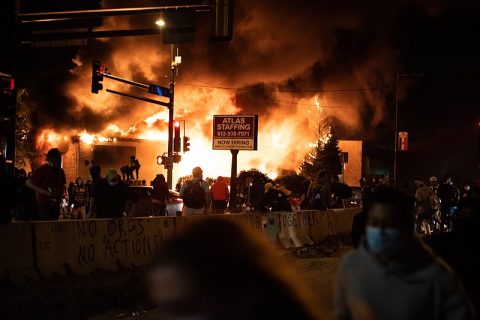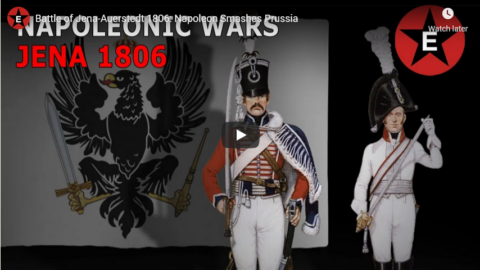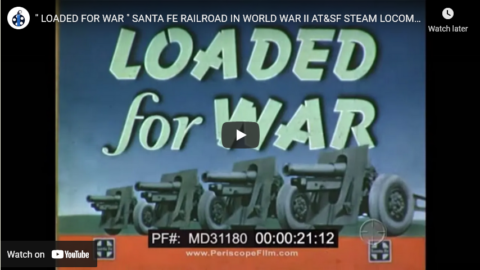Epic History TV
Published 28 Aug 2018Fresh from his great victory at Austerlitz, Napoleon’s next campaign saw him take on Prussia in the autumn of 1806. Prussia’s army had been feared throughout Europe since the days of Frederick the Great, but in just 5 weeks of “Napoleonic Blitzkrieg”, the French Emperor showed that those days were long gone.
Start your FREE trial with The Great Courses Plus here: http://ow.ly/Fq9R30kFTgf
Get early access and a vote on future topics by supporting Epic History TV on Patreon: https://www.patreon.com/epichistorytv
With thanks to HistoryMarche, check out his channel here: https://www.youtube.com/channel/UC8MX…
Learn more about the Napoleonic Wars with books from our co-production partner Osprey Publishing (as an Amazon Associate I earn from qualifying purchases):
Jena 1806 http://geni.us/C8ieSe
Napoleon’s Cuirassiers & Carabiniers http://geni.us/AZ4nWU
Prussian Cavalry of the Napoleonic Wars http://geni.us/xepcMusic from Filmstro: https://filmstro.com/?ref=7765
Get 20% off an annual license with this exclusive code:EPICHISTORYTV_ANN#EpicHistoryTV #NapoleonicWars #Napoleon
“The Great Courses Plus is currently available to watch through a web browser to almost anyone in the world and optimized for the US, UK, and Australian markets. The Great Courses Plus is currently working to both optimize the product globally and accept credit card payments globally.”
March 15, 2021
Battle of Jena-Auerstedt 1806: Napoleon Smashes Prussia
Target is careful to only cite economic reasons for abandoning their downtown Minneapolis headquarters
Jon Miltimore explains why the Target corporate headquarters in Minneapolis will be given up — for reasons that go beyond the claimed success of the telecommuting encouraged by the 2020 pandemic lockdowns:

A building burning in Minneapolis following the death of George Floyd.
Photo by Hungryogrephotos via Wikipedia.
Target Corporation, the eighth largest retailer in the United States, announced in an email to employees on Thursday that it will be leaving the City Center, its primary downtown Minneapolis location.
Company officials cited improved remote work opportunities and less need for space as the drivers for the decision.
“In just one year we’ve proven that we can drive incredible results, together, from our kitchens and basements and living rooms,” said Melissa Kremer, executive vice president and leader of Target’s human resources operations.
Target, the largest employer in Minneapolis with some 8,500 corporate workers, says the 3,500 employees who work at the City Center will still have a “home base,” but it will be at another Minneapolis location or in the nearby suburb of Brooklyn Park.
A Story of Capital Flight?
On one hand, there is little reason to doubt Target’s explanation for abandoning its headquarters. Many anticipated that the pandemic would lead to a normalization of remote work.
“The future of work will be distributed,” Erica Brescia, the chief operating officer of Github, told the BBC last fall. “We’re going to see a big shift from office by default to remote by default.”
Part of that shift, it’s reasonable to assume, would be corporations moving away from high-end corporate real estate. Yet it also shouldn’t be forgotten (or ignored) that Target’s decision comes less than a year after Minneapolis suffered some of the worst riots in US history, prompted by the May 25 death of George Floyd.
The riots — which broke out after a video went viral showing police pinning Floyd, a 46-year-old black man, to the ground for nearly nine minutes before he died — caused an estimated $2 billion in damage.
Though Target made no mention of the riots in its announcement, last summer I noted that an abundance of evidence suggested that the economic damage of the riots would persist long after the wreckage had cleared.
Loaded For War — The Santa Fe Railroad In World War II
PeriscopeFilm
Published 24 May 2020Want to support this channel and help us preserve old films? Visit https://www.patreon.com/PeriscopeFilm
Visit our website www.PeriscopeFilm.comSanta Fe presents, Loaded for War. This WWII era color film presents the power of the Santa Fe railroad. While speaking of the mighty effort the trains and its myriad workers achieved during wartime, the footage is all modern and in color. The film does a great job of showing how integral our railroad system has been to the growth of these United States. “With grateful appreciation to the Office of Defense Transportation, the Army, Navy, Maritime Commission, and the shipping and traveling public, for the cooperation and genuine understanding which has made the service record here presented possible …” The film opens with a steam locomotive bearing down on the camera 1:03. The narrator speaks as the train crosses a trestle 1:10. News headlines of December 7, 1941 11:25. Steam and diesel locomotives are transformed into machines of war 1:40. Smoke fills a train yard as trains enter and are washed 2:08. A train signal shows a green light 2:25. Workers are seen in the factory 2:36. Civilians exit trains volunteering for service 2:45. A telegram is shown stating that the trainmen should, “move all available equipment to military stations without delay” 2:54. Four locomotives are shown 3:03. Crews are assigned and men work double shifts 3:45. Rail equipment is loaded by military personnel, ready to move 4:13. Flatcars are loaded with tanks and military trucks 4:52. Divisions of fighting men aboard the trains 5:09. The tanks roll down the tracks on flatcars 5:35. The wheels of war are rolling 6:14. The day by day mass movement of freight is shown at the train yard 6:48. Trains crossing country on railroad tracks 7:40. Trains service the shipyards as men work building military ships 8:00. A ship is launched 8:15. Cattle and pigs are delivered throughout the 48 states 8:37. Potatoes are tilled in the field with heavy equipment 9:00. Oranges are picked and packed in southern states 9:13. Military bombers soar through the air 9:23. Heavy machinery workers in the factories 9:48. Factories and men building artillery shells 9:55. Tanks roll off the product line and onto the railroad tracks 10:10. Locomotive struggles up a hill 10:25. Miners and their lamp hats head down the tunnels by rail 10:38. Oil fields are shown 11:15. Oil is loaded onto railway tankers 11:38. Machines digging the copper mines 12:08. The big diggers pick up 8 cubic yards of copper at a time 12:18. The railroad moves the copper to the smelters 12:31. Sulfur mines using forced steam 12:50. Sulfur is moved by train to the gunpowder makers 13:25. Logging industry is served with the railroads 14:00. Cotton and scrap metal industries are also served by rail 14:18. Old cars are being called back into use for the war effort 15:30. Locomotive number 3723 comes out of retirement by the trainmen 15:48. Various train parts are marked and taken away for repair or replacement 16:07. Men work in factories with fine-tuned machines to retool and refine old parts for new use 16:26. Old firebrick is removed and replaced 16:43. Acetylene torches are used inside the huge boilers 16:49. Huge wheels are cleaned and dipped and sprayed ready for use 17:08. Heat is used to expand the metals 17:18. Locomotive number 3723 is fully refurbished and ready for the tracks 18:05. All types of equipment need to be refurbished for the war effort 18:46. The men use heat and molten metal to reshape old parts for new use 19:00. Gears are ground with precision 19:13. The railroads motto, “let’s keep ‘em rolling” 19:24. The men work on building new track 19:35. Men using hammers to straighten out tracks 19:53. The towermen, bridge crews, conductors, station men, ticket men, dispatchers, signalmen and to the other thousands of men – give the railroad men their due 20:44. Women are also an integral part of the success of the railroad 21:07. The women work in offices but also in factories with heavy machinery and molten metal 21:21. Two women wash down a train 21:30. The wheels of war are rolling 21:40. Military men march in unison 21:47. Train caboose pulls away from the camera 22:52. A flag with 8057 turns into the American flag and waves in the breeze 23:06. The End. Santa Fe.
We encourage viewers to add comments and, especially, to provide additional information about our videos by adding a comment! See something interesting? Tell people what it is and what they can see by writing something for example: “01:00:12:00 — President Roosevelt is seen meeting with Winston Churchill at the Quebec Conference.”
This film is part of the Periscope Film LLC archive, one of the largest historic military, transportation, and aviation stock footage collections in the USA. Entirely film backed, this material is available for licensing in 24p HD, 2k and 4k. For more information visit http://www.PeriscopeFilm.com
QotD: The “Greatest Generation”‘s expectations of the Boomers
I’ve never bought into the “greatest generation” stuff. I saw it as a Jungian appeasement of the boomers towards their aging fathers whom they’d “sacrificed” in more ways than one. I’m at heart — or at back brain — very Roman. To explain why would take more uncomfortable biographical revelations than I have time for, including “because that’s what I was brought up to be.”
I get this dance very well. First comes the sacrifice, then the deification.
Did the World War II generation rise to the challenge? Yes, they did. But in a way they’d been brought up for it: a generation grown to continue Europe’s long war, because the previous generation had been eaten in the fields of WWI.
And can anyone blame the veterans, coming back from yet another European abattoir for wanting to put an end to the cycle?
Obviously something had gone wrong in Western civilization and it needed to be stopped. The next generation were going to be a brand new beginning. They were going to make it all better.
Did I mention the serpent in the garden? You can’t make the garden without the serpent.
A lot of the crazy of the sixties, and the unmaking of society was what the boomers were explicitly raised to do. A lot of the poison in our cultural waters was the rebellion of the veterans of WWII. An understandable rebellion, but one that threw the baby out with the bath water nonetheless.
However, even the boomers who weren’t raised on utopian ideals, who weren’t told the world was theirs to remake, even the ones who didn’t protest (or fought in) the war, even the ones who were and are decent human beings were raised with the idea that it was theirs to change Western Civ to be more … humane. Or at least not to self-destruct in battlefields.
This created an ur-programming, a back brain thing. Even responsible boomers who cut their hair, got jobs and raised families had the idea that they were supposed to transform everything.
Sarah Hoyt, “Business From The Wrong End”, According to Hoyt, 2018-09-27.





